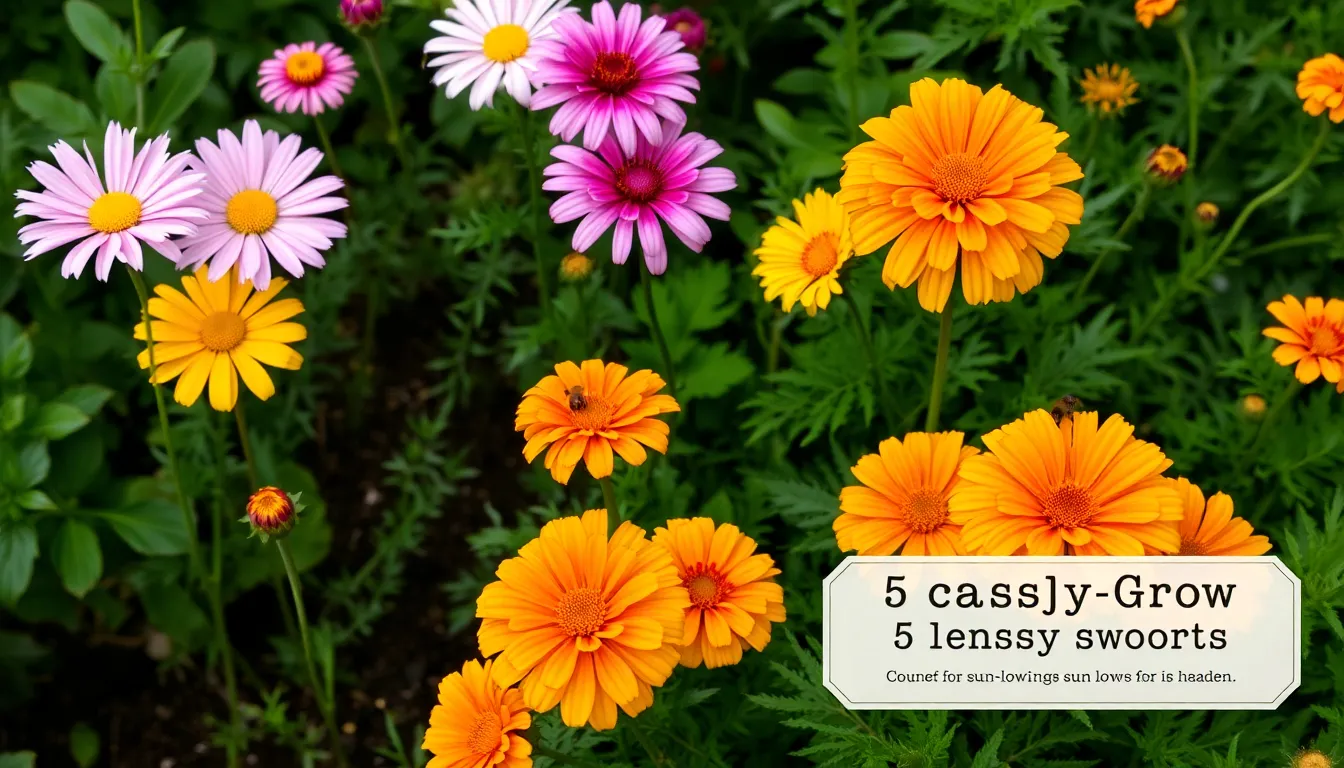Gardening is more than just a hobby; it’s a journey of nurturing and discovery that rewards your senses with vibrant colors and delicate fragrances. Whether you’re just starting with your first flower bed or you’ve been cultivating blooms for years, there’s something truly magical about watching your garden come to life with easy-to-grow flowers.
For beginners, selecting flowers that are forgiving and flourish with minimal fuss can be the key to gaining confidence and enjoying the gardening process. Experienced gardeners, on the other hand, may find joy in revisiting these reliable favorites, effortlessly adding bursts of color to fill in gaps and enhance their lush landscapes. In this article, we’ll explore five flowers that promise to transform your garden into a blooming paradise, regardless of your skill level.
You’ll discover practical tips tailored to ensure each of these blossoms thrives in your care, from planting to peak bloom. With our guidance, you’ll learn how to make the most of your garden’s conditions, ensuring that nurturing these flowers becomes a delightful and rewarding experience. So, grab your gloves and get ready to dig in—these easy-to-grow flowers are sure to bring beauty and joy to your garden, one petal at a time.
Choosing Beginner-Friendly Blooms
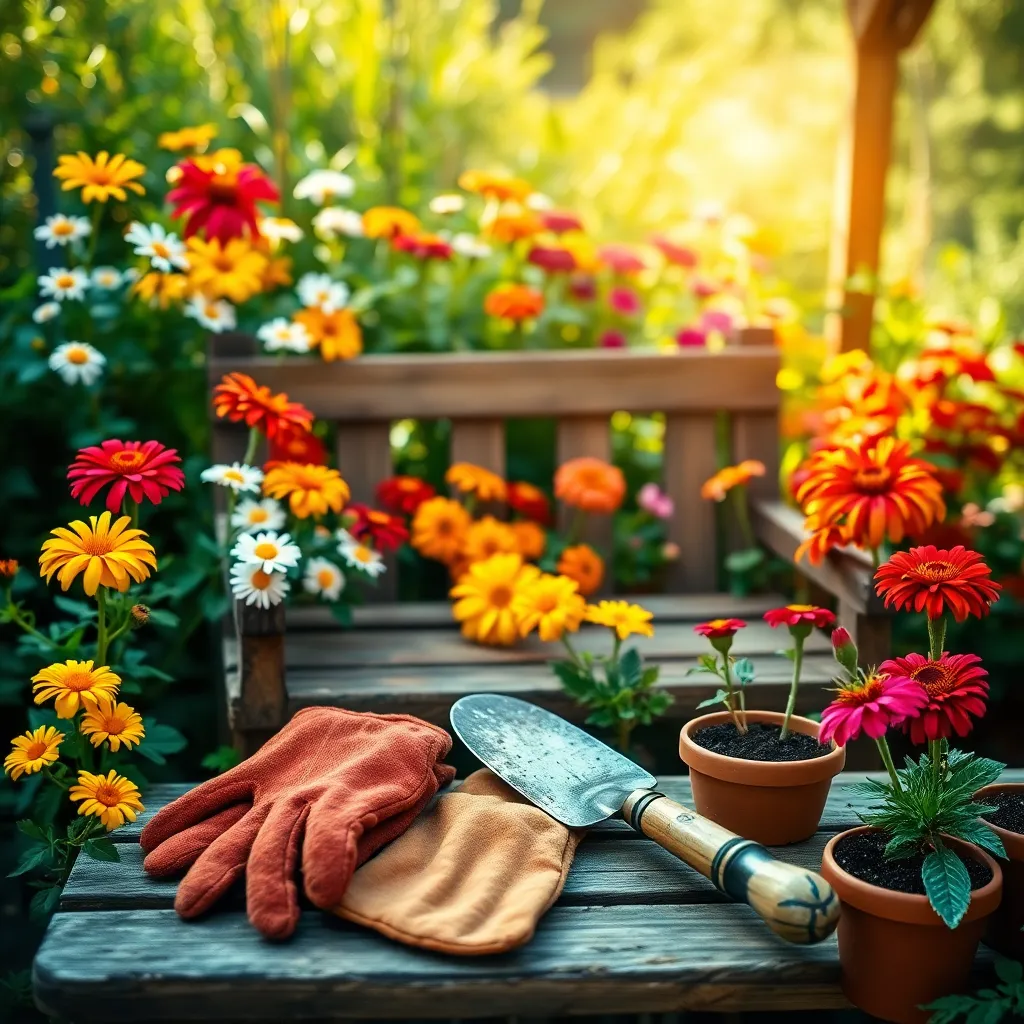
Choosing beginner-friendly blooms ensures gardening success and cultivates confidence in new gardeners. It’s crucial to select flowers that thrive with minimal care, offering a beautiful display with little effort.
Marigolds are a great option for beginners, as they are hardy and resistant to pests. They require full sunlight and well-drained soil, making them suitable for most garden spots.
To get the best results from marigolds, water them deeply once a week, allowing the soil to dry out between watering sessions. Adding a layer of mulch can help retain moisture and reduce weeds around these vibrant blooms.
Zinnias are another easy-to-grow choice, loved for their long-lasting blooms and variety of colors. Plant zinnias in an area that receives at least six hours of sunlight daily, and ensure the soil is rich in organic matter.
Deadheading zinnias regularly encourages continuous blooming throughout the growing season. For those looking to extend their gardening skills, try starting zinnias from seeds indoors six weeks before the last frost date.
Finally, consider sunflowers, which are not only stunning but also incredibly simple to grow. These sun-loving giants require well-drained soil and should be spaced about 12 inches apart to accommodate their growth.
Once established, sunflowers need minimal care; just water them deeply when the top inch of soil is dry. As an advanced tip, support taller varieties with stakes to prevent them from toppling over in windy conditions.
Ideal Conditions for Easy Growth
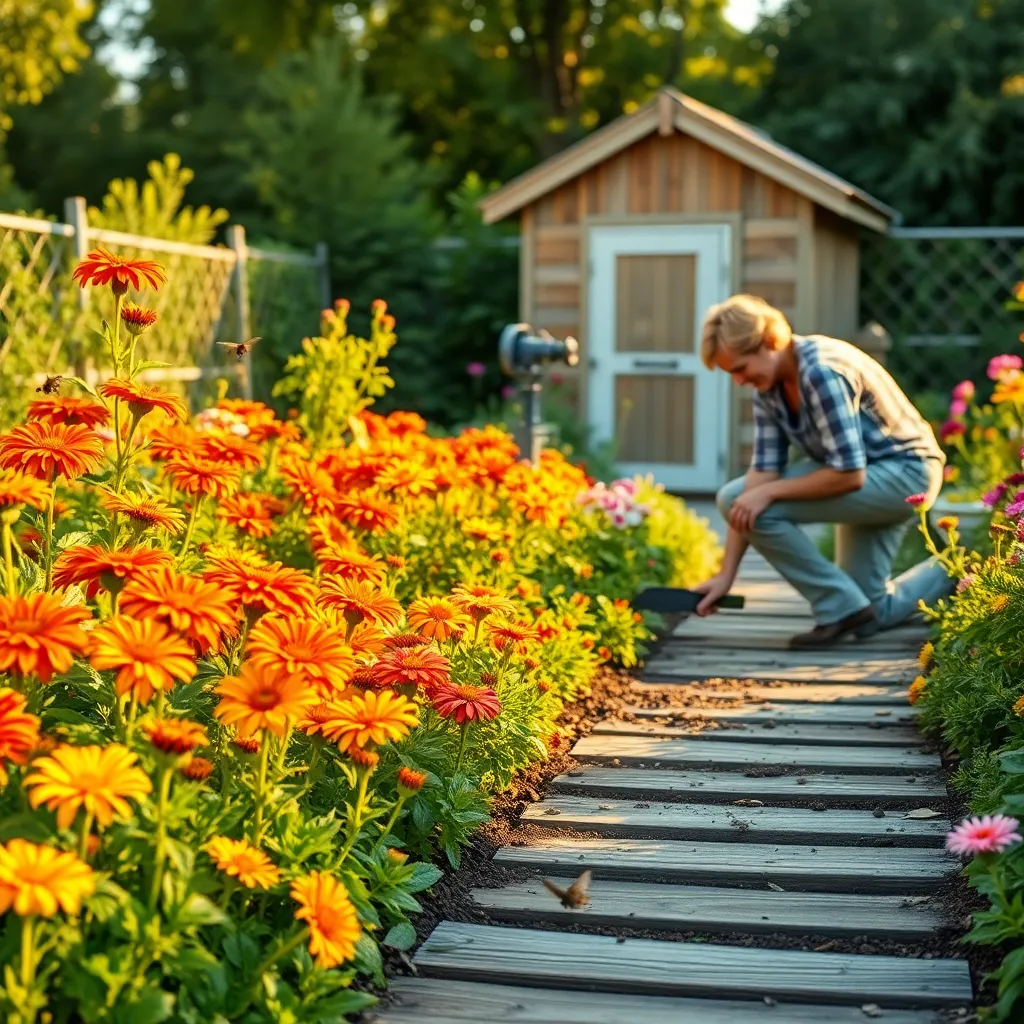
Creating the ideal conditions for flower growth starts with understanding the specific needs of your plants. While many flowers are forgiving, providing the right environment ensures they thrive with ease.
First, consider the importance of soil preparation. Most easy-to-grow flowers prefer well-drained soil enriched with organic matter. Adding compost or aged manure can boost soil fertility, giving your plants a strong start.
Watering is another crucial aspect of plant care. Beginners should aim to water deeply but infrequently, encouraging deep root growth. For advanced gardeners, using a soaker hose or drip irrigation system can efficiently manage water use while keeping foliage dry, reducing disease risk.
Sunlight requirements vary among flowers, but generally, they need at least six hours of sunlight daily. Choose a location that meets these light needs, and if you’re growing in pots, consider moving them to follow the sun’s path for maximum exposure. Always observe your plants; they will show signs if they are not getting enough light.
Simple Planting Tips for Success
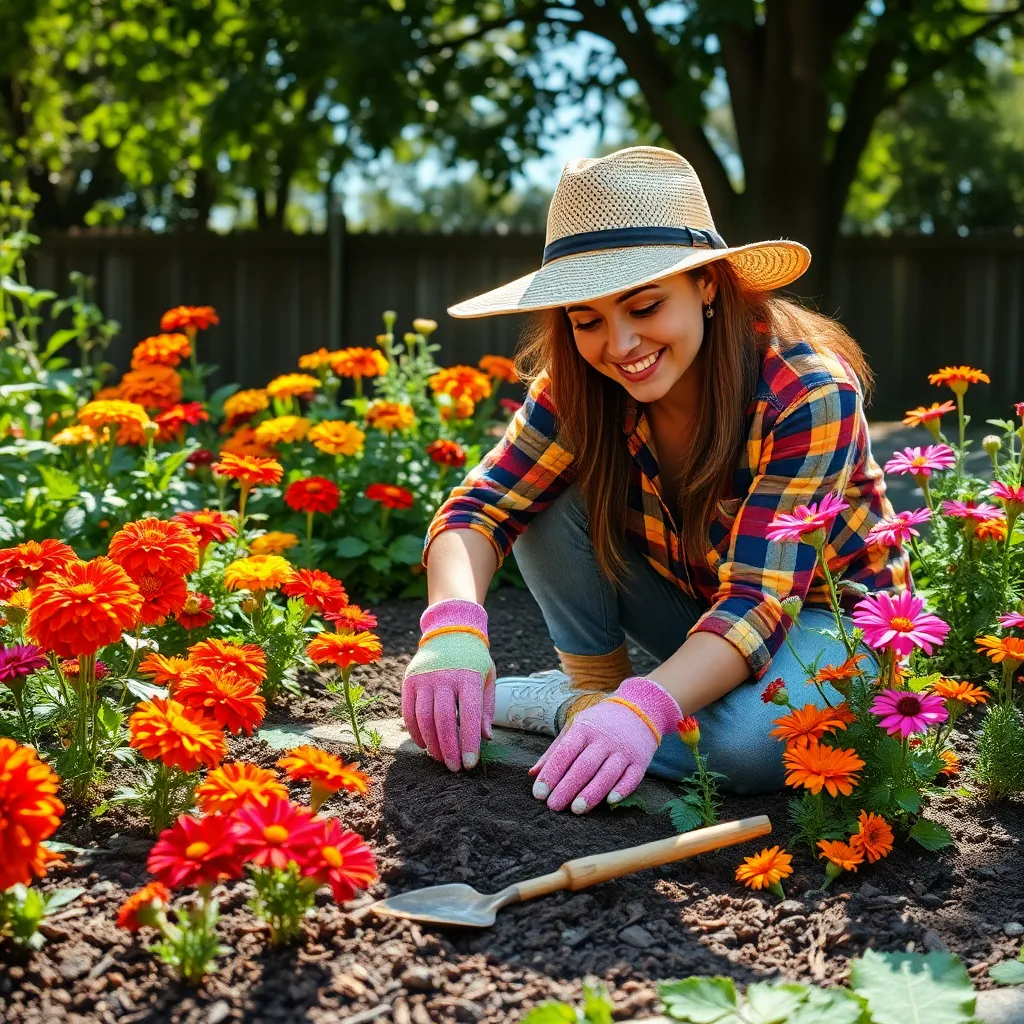
To ensure your flowers thrive, start by preparing the soil with care. Use a good quality, well-draining soil mix, enriched with organic matter like compost to provide necessary nutrients.
Watering is crucial, yet overwatering can be detrimental. Aim to water your plants in the morning, allowing the soil to dry out slightly between waterings to prevent root rot.
Position your flowers in a spot that suits their light requirements, as this can vary between species. For instance, sun-loving plants like marigolds thrive in full sun, while impatiens prefer shaded areas.
Feeding your plants with a balanced fertilizer every few weeks can significantly boost their growth and flowering. However, over-fertilizing can lead to lush foliage at the expense of blooms, so follow package instructions carefully.
Consider mulching around your plants to retain soil moisture and suppress weeds. Organic mulch like shredded bark or straw also gradually enriches the soil as it breaks down.
For pest control, regularly inspect your plants for signs of trouble, such as insect damage or disease. Use natural remedies like neem oil or introduce beneficial insects like ladybugs to keep pests at bay.
Prune your plants to promote healthy growth and remove any dead or diseased parts. Deadheading spent flowers can encourage further blooming and maintain a neat appearance in your garden.
Low-Maintenance Care Routines
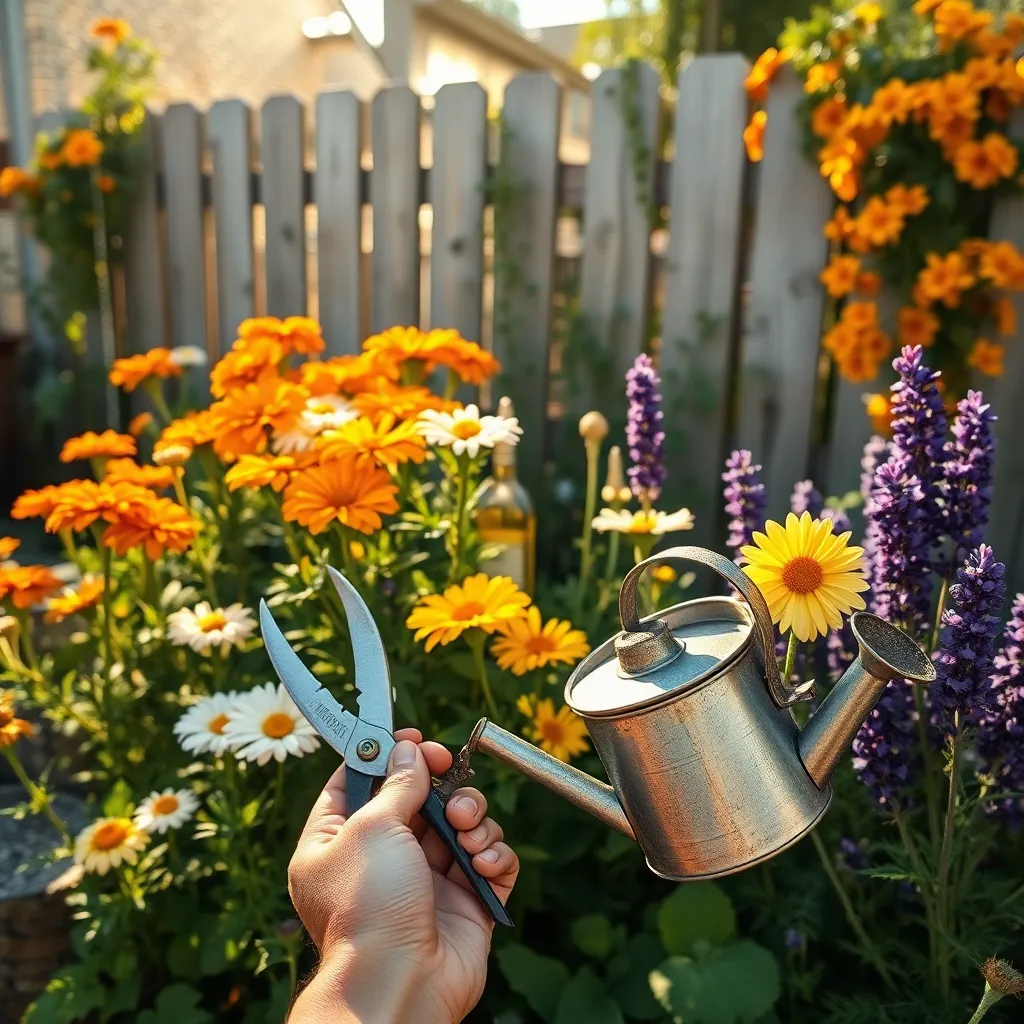
Creating a low-maintenance garden is all about selecting the right plants and understanding their needs. Choose flowers that are resilient and adaptable to a variety of conditions, such as marigolds or zinnias, which thrive with minimal intervention.
Watering is a crucial aspect of any garden, but it doesn’t have to be labor-intensive. To minimize effort, consider installing a drip irrigation system that provides consistent moisture directly to the roots, reducing evaporation and water waste.
Mulching is another effective strategy to reduce maintenance. Spread a layer of organic mulch, like shredded bark or straw, around your plants to retain soil moisture and suppress weeds, significantly cutting down on the time spent weeding and watering.
Fertilizing doesn’t need to be a frequent chore if you’re strategic about it. Opt for a slow-release granular fertilizer that can feed your plants over several months, ensuring they receive a steady supply of nutrients without the need for constant reapplication.
When it comes to pruning, less is often more for low-maintenance gardens. Select flower varieties that require minimal deadheading, or simply let nature take its course, allowing spent blooms to drop and enrich the soil naturally as they decompose.
Enjoying Your Blossoming Garden
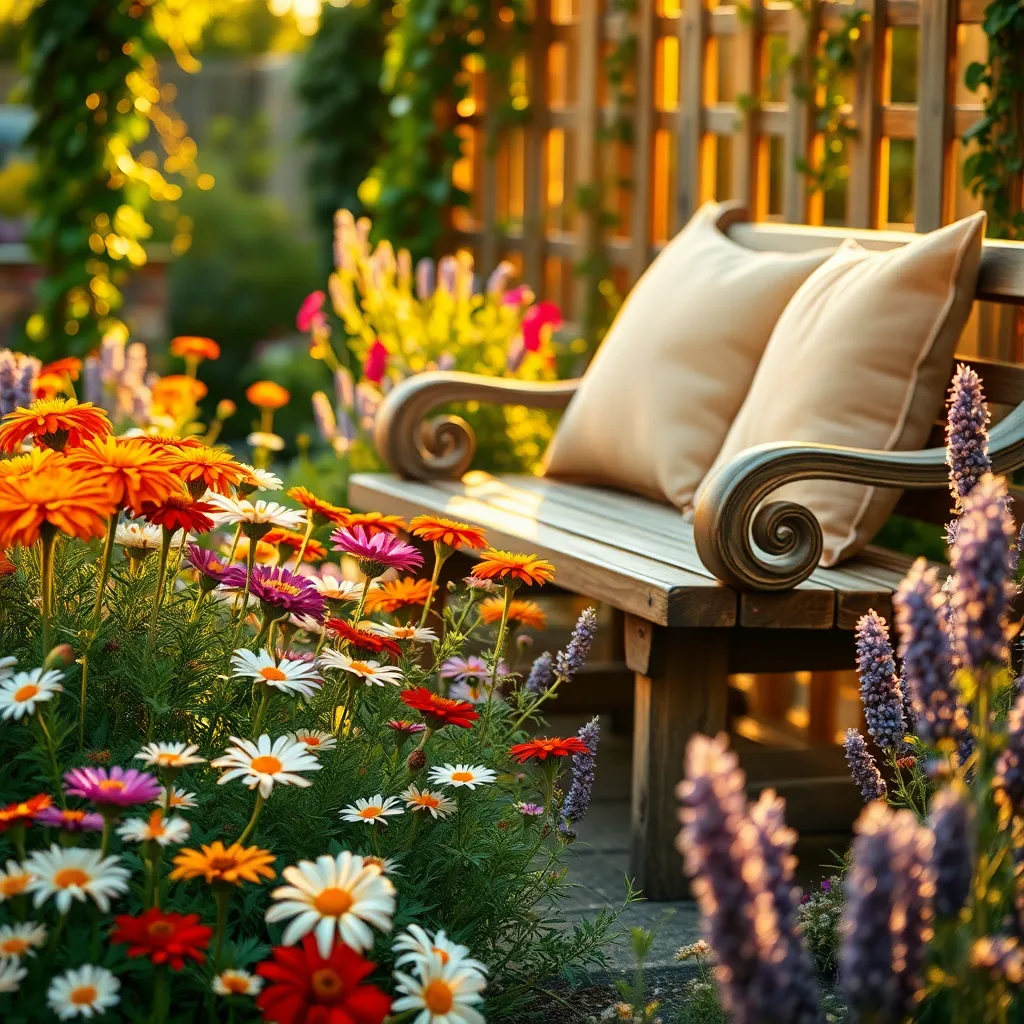
As your garden begins to flourish, taking time to appreciate the beauty of your flowers can be immensely rewarding. To ensure your plants remain vibrant, it’s crucial to regularly check for signs of pests or disease, as early detection can save your garden from significant damage.
Consider keeping a gardening journal to track the growth and bloom cycles of your flowers. This practice not only helps in understanding the needs of each plant but also in planning for future plantings and garden improvements.
For optimal flower health, focus on providing the right soil conditions for your plants. Most flowering plants thrive in well-draining soil that is rich in organic matter, so consider adding compost or a balanced organic fertilizer to maintain soil fertility.
Watering plays a pivotal role in the success of your garden. Water deeply but infrequently, ensuring that moisture reaches the root zone, which will encourage deep root growth and improve drought resistance.
Regularly deadhead spent blooms to encourage new growth and prolong the blooming period of your flowers. This simple task redirects the plant’s energy from seed production back into creating more beautiful blooms.
For advanced gardeners, experimenting with companion planting can enhance the health and beauty of your garden. Pairing flowers with complementary plants can deter pests, enhance pollination, and create a visually stunning garden display.
Conclusion: Growing Success with These Plants
In nurturing a thriving garden, just like in cultivating meaningful relationships, the right elements must come together. This article explored five easy-to-grow flowers—sunflowers, marigolds, zinnias, cosmos, and lavender—as metaphors for nurturing key relationship concepts: commitment, communication, patience, understanding, and trust. Each flower embodies a unique aspect, reminding us that relationships, like gardens, flourish with consistent care and attention.
To plant the seeds of these concepts in your own life, begin by choosing one relationship in need of growth. Identify which concept it lacks and take a small, meaningful action today—perhaps a heartfelt conversation or a simple gesture of appreciation.
As you embark on this journey, remember that successful relationships, much like a beautiful garden, require ongoing effort and dedication. Bookmark this article now to revisit these essential concepts and ensure your relationships continue to blossom.
With the right care, your relationships can grow stronger and more fulfilling. Embrace this opportunity to nurture them into a tapestry of vibrant connections, knowing that the seeds you plant today will yield a garden of enduring love and understanding tomorrow.

